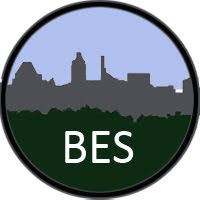Birding while Black in Baltimore
Today our guest blogger is longtime BES LTER Investigator and birder Dr. Charles Nilon. He has written the following post in honor of #BlackBirdersWeek.
Paige Warren and I started the Baltimore Ecosystem Study Bird Monitoring Project in the summer of 2002. Since then the project has been coordinated by a group of graduate students and technicians who have faithfully counted birds at 132 locations in Baltimore. Dr. Ela-Sita Carpenter, a Baltimore native, and naturalist at Carrie Murray Nature Center, was the most recent coordinator.
The full title of the project is “BES Bird Monitoring Project: Birds in Everyday Baltimore” because we wanted to highlight that birds are a part of all of the city and not just places that are the focus of conservation efforts. Our focus was on the birds and the associated nature that people in the city see everyday. We recognized from the start that because 64% of Baltimore’s residents are Black that we were counting birds where Black people live, work, go to school, and enjoy the outdoors. We’ve learned that there is a connection between where you live in the city and the kinds of birds that you see. We learned that birds are a good lens for looking at what is going on in neighborhoods through hearing discussions about plans for managing vacant lots, the city’s policies for tree removal, and tree planting that occurs as neighborhoods gentrify. We also heard many stories from about birds, their meanings, and the places where people see them, all of which point to the value of birds in the day-to-day lives of Black people in Baltimore.
Between 2005 – 2007 I gave a Black History Month presentation at Franklin Square School, one of the schools participating in the Green Career Ladder program organized by Baltimore’s Parks and People program. The students and I would walk down the street to one of bird monitoring points, talk about how how to look for birds, how to be quiet for a minute and listen for birds, and point out the different species that were found on the monitoring point. We also talked about how it’s okay to take time to look at birds and it is even something that you can consider as a career. The Franklin School students I talked with are now adults in their twenties. I hope that they are still watching birds in the city. And that they have come to realize how birds and nature make their neighborhood unique and special.
These examples point to the importance of everyday contact with birds in cities and the meaning of these experiences to residents. Birding while Black in Baltimore means all the ways that Black people observe birds and use those observations in the ways they frame their lives in the city.
Charlie Nilon
School of Natural Resources
University of Missouri
Columbia, MO





